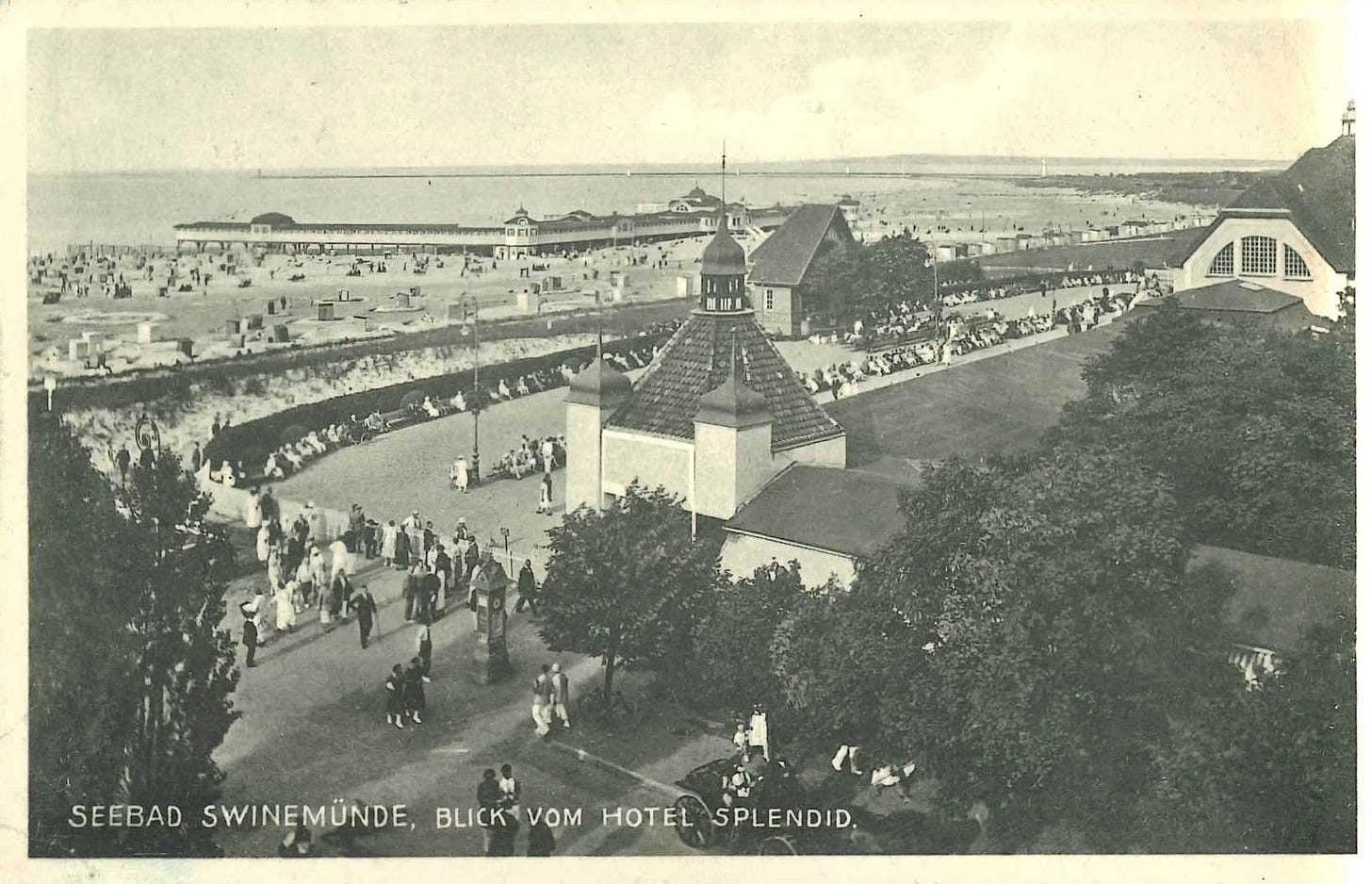Bathing in Style: Seebad Swinemünde
A trip to the beach in an area of Pomerania that was Polish before it became Swedish and Prussian-German before it ended up, once again, in Poland
First of all, a proper Happy New Year from the Erich Sonntag Postcard Collection!
Posting has been slow so far mainly due to a rather unfortunate event—I caught a super-weird cold that knocked me flat for three days last week. It was quite weird—strange symptoms incl. loss of appetite, headache, and a strong cough but no fever or even a runny nose—and I spent three days being quite unable to do anything.
All these things being equal, I’m back—and there’s no better, or more appropriate, way to celebrate the return of regular posting activity—than a few picture postcards.
And today, I’ll take you to Swinemünde, today’s Świnoujście, Poland.
Founded in the 12th century, the city’s life was always tied to shipping and the Baltic Sea. After the 30 Years’ War (1618-48), Swinemünde was Swedish before it became Prussian in 1720. The city remained under Prussian and later German sovereignty until the end of the Second World War when the victorious Allied Powers determined to hand over Swinemünde to Poland, hence its present name.
“Gruß aus Ostseebad Swinemünde”
Mailed in 1938, the postcard shows the coming into the harbour (top left), the Rose Garden (Rosengarten, centre), Strandleben (a view of the beach, top right), a view of the beach promenade (bottom left), and the Kurhaus (bottom right).
As the above postcard mailed in 1904 shows, going to the seaside involved these stylish baskets.
The above postcard shows the view from the Hotel Splendid; it was mailed in 1927.
By the late 1930s, the beach promenade had grown in size—as had the numbers of tourists flocking to Swinemünde.
While I don’t know if that slide was Germany’s first, it was in place and fully operational by 1927.







Cheered me up, seeing happy days! I think they may still have the wicker shelters in some places on that coast line.
It amazes me that tourism continued for a part of the population all through the war